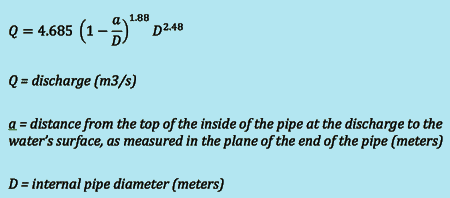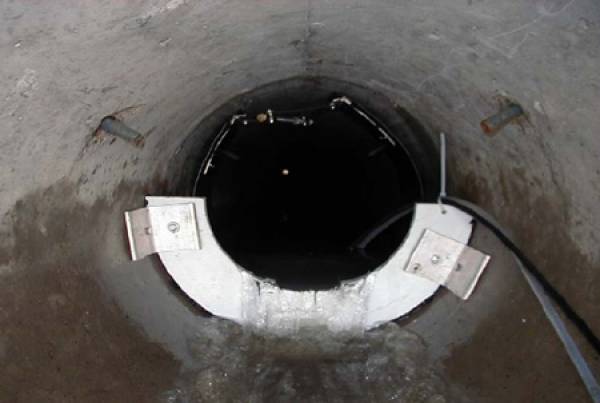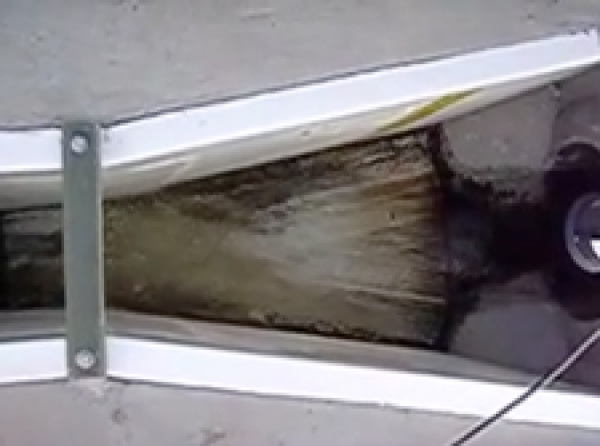This website uses a variety of cookies, which you consent to if you continue to use this site. You can read our Privacy Policy for
details about how these cookies are used, and to grant or withdraw your consent for certain types of cookies.
California Pipe Method of Flow Measurement
Flow from a horizontal pipe can be estimated through the use of the California Pipe Method. Developed in 1922 / 1924 by B.R. Van Leer, the Method was developed from experimental data to measure the discharge from horizontal pipes which are not flowing full.
The data was collected from and the Method developed for pipes from 3 to 10-inches [7.62 – 25.4 cm] in size. As the Method is based upon experimental data, it should not be applied to pipe sizes larger or smaller.
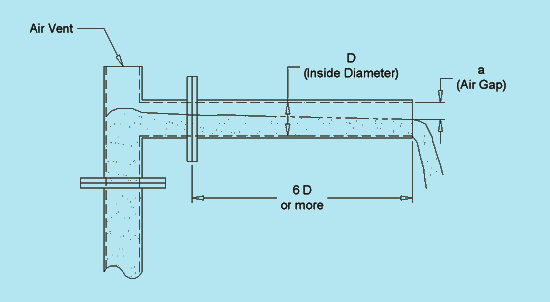
Measurement Requirements
For the Method to obtain accurate results, the pipe must be:
- Exactly horizontally level
- Circular in cross-section
- Flow partially full
- Freely discharge into the air
- The discharge must be at least 6 times the pipe size downstream of any restriction or change in direction
The only measurement necessary with the California Pipe Method is the vertical distance for the top of the interior of the pipe to the surface of the water at the discharge.
Flow Equation
The flow equation, in Imperial units, for the California Pipe Method is presented below:
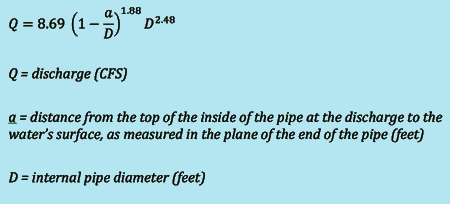
In SI units:
Accuracy
The accuracy to the California Pipe Method is no more than +/- 10% at best. The measurement critical to determining the flow rate is the distance from the top of the inside of the pipe to the surface of the water. The surface of the water, can unfortunately, be somewhat turbulent and an accurate measurement of this distance can be difficult.
For this reason, where free-spilling pipes need to be measured, it is more common to use a H Type or Montana flume; both of which are well suited for free-spilling discharges and provide considerably better accuracies (+/- 3-5%).
Limitations
The adoption of the California Pipe Method is limited by a number of factors:
- Flumes are available that more accurately measure flow
- The Purdue Method developed by Greeve (1928) is applicable to both partially and full pipes
- The Method only applies to pipes flowing no more than half full (Rohwer 1942)
- The Method was only developed for pipes from 3 to 10-inches [7.62 – 25.4 cm] in size
Sources: Greve, F., Measuring of Pipe Flow by the Coordinate Method, Purdue Engineering Experiment Station, Bulletin 32, 1928, Van Leer, B., The California Pipe Method of Water Measurement, Engineering News Record, August 3, 1922, Van Leer, B., The California Pipe Method of Water Measurement, Engineering News Record, August 21, 1924, Rohwer, C., Discharge of Pipes Flowing Partly Full, Civil Engineering, American Society of Civil Engineers, 1942
Related Blog Posts
Explore more insights in our blog.

LOCATIONS IN ATLANTA, GA & BOISE, ID


